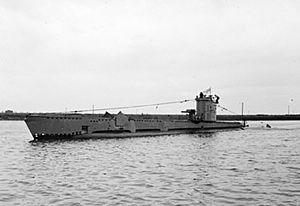
U-boats were naval submarines operated by Germany, particularly in the First and Second World Wars. The term is an anglicised version of the German word U-Boot, a shortening of Unterseeboot, though the German term refers to any submarine. Austro-Hungarian Navy submarines were also known as U-boats.
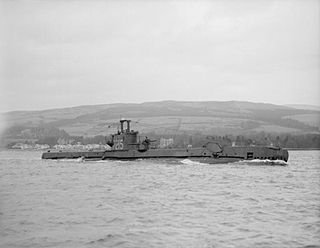
HMS Sceptre (P215) was a third-batch S-class submarine built for the Royal Navy during World War II. Completed in April 1943, she spent the majority of her career in the North Sea, off Norway. After an uneventful patrol, the submarine participated in Operation Source, an attack on German battleships in Norway using small midget submarines to penetrate their anchorages and place explosive charges. However, the midget submarine that she was assigned to tow experienced technical difficulties and the mission was aborted. During her next four patrols, Sceptre attacked several ships, but only succeeded in severely damaging one. She was then ordered to tow the submarine X24, which was to attack a floating dry dock in Bergen. The operation, codenamed Guidance, encountered difficulties with the attacking submarine's charts, and the explosives were laid on a merchant ship close to the dock instead. The dock was damaged and the ship sunk, and X24 was towed back to England. Sceptre then conducted a patrol in the Bay of Biscay, sinking two German merchant ships, before being reassigned to tow X24 to Bergen again. The operation was a success, and the dry dock was sunk.
German submarine U-864 was a Type IXD2 U-boat of Nazi Germany's Kriegsmarine in World War II. On 9 February 1945, she became the only submarine in history to be sunk by an enemy submarine while both were submerged. U-864 was sunk by the British submarine HMS Venturer, and all 73 men on board died.

HMS Safari was a third batch S-class submarine built for the Royal Navy during World War II. Commissioned in 1942, she was assigned to operate in the Mediterranean Sea. During the course of the war, Safari sank twenty-five ships, most of which were Italian.
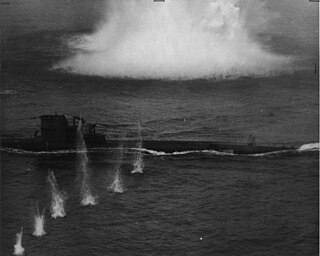
German submarine U-134 was a Type VIIC U-boat of Nazi Germany's Kriegsmarine during World War II. She was laid down on 6 September 1940 by Bremer Vulkan in Bremen-Vegesack as yard number 13 and commissioned on 26 July 1941. In seven patrols, U-134 sank three ships for a total of 12,147 gross register tons (GRT).

HMS Sickle was a third-batch S-class submarine built for the Royal Navy during World War II. Completed in 1942, she made her initial war patrol off the Norwegian coast. Sickle then sailed to Gibraltar, from where she conducted one patrol, then to Algiers, French North Africa. From 10 May to 10 October, the boat patrolled the Gulf of Genoa five times and sank a German submarine as well as three minesweepers and an escort ship. She then moved to Beirut, French Lebanon, and conducted two patrols in the Aegean Sea, sinking three caïques and a merchant ship, in addition to landing resistance operatives in Greece.
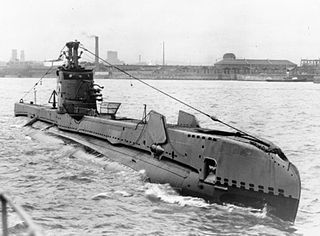
HMS Saracen was a third-batch S-class submarine built for the Royal Navy during the Second World War. Completed in 1942, Saracen conducted a patrol in the North Sea where she sank a German U-boat. She was then assigned to the 10th Submarine Flotilla in Malta, from where she made three patrols; on her second, she sank an Italian submarine. Saracen was then reassigned to the 8th Submarine Flotilla, based in Algiers, French North Africa.

HMS Sea Nymph was a S-class submarine of the third batch built for the Royal Navy during World War II. Completed in July 1942, she spent the majority of her career patrolling the waters off Norway in the North Sea, then was sent to the Pacific but was forced back due to technical problems.

HMS Seadog was a third-batch S-class submarine built for the Royal Navy during World War II. Completed in September 1942, she spent most of her career in Arctic waters, off Norway, but sank only one German ship in 13 patrols. In January 1945, she was redeployed to the Far East, meeting more success. On her first patrol in the area, the submarine rescued four American airmen. After two patrols, she and her sister ship HMS Shalimar sank five sailing vessels, two coasters, a barge, a tugboat and a Japanese tank landing ship. After the war ended, Seadog was sent back to England, placed in reserve, then sold for scrap in December 1947. She was ultimately broken up in August 1948.
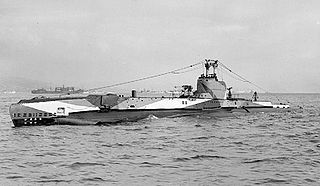
HMS Sealion was a second-batch S-class submarine built during the 1930s for the Royal Navy. Completed in 1934, the boat fought in the Second World War.
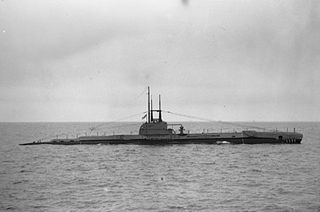
HMS Seawolf was a second-batch S-class submarine built during the 1930s for the Royal Navy. Completed in 1936, the boat fought in the Second World War.

HMS Unrivalled (P45) was a U-class submarine built for the Royal Navy during World War II. The boat has been the only ship of the Royal Navy to ever bear the name Unrivalled. Completed in 1942, the boat spent most of the war in the Mediterranean. She sank a number of small merchant ships and naval auxiliaries, but major success eluded her during the war. Too small and slow for the post-war environment, Unrivalled was scrapped in 1946.

Captain James Stuart Launders, (1919–1988), was an officer in the Royal Navy during and after the Second World War. He retired from the service in 1974, but continued to serve in an unofficial capacity on training programs until his death in 1988. In addition to his reputation amongst his crew, colleagues, and historians as a brilliant, highly skilled, and courageous officer, Launders is remembered as the only submarine commander in history to have engaged and sunk an enemy submarine (U-864) using only his own unaided vessel (HMS Venturer) while both boats were fully submerged.

German submarine U-74 was a Type VIIB U-boat of Nazi Germany's Kriegsmarine during World War II.

German submarine U-101 was a Type VIIB U-boat of Nazi Germany's Kriegsmarine during World War II. She had a highly successful career.

Operation Caesar was a secret mission carried out by Germany in the Second World War to supply Japan with advanced technology. The operation failed due to the sinking of U-864 by a British submarine, the only known example of a submerged submarine sinking another submerged submarine.
German submarine U-486 was a Type VIIC U-boat built for Nazi Germany's Kriegsmarine for service during World War II. She was laid down at the Deutsche Werke in Kiel as yard number 321, launched on 12 February 1944 and commissioned on 22 March with Oberleutnant zur See Gerhard Meyer in command.

SM U-21 was a U-boat built for the Imperial German Navy shortly before World War I. The third of four Type U-19-class submarines, these were the first U-boats in German service to be equipped with diesel engines. U-21 was built between 1911 and October 1913 at the Kaiserliche Werft in Danzig. She was armed with four torpedo tubes and a single deck gun; a second gun was added during her career.
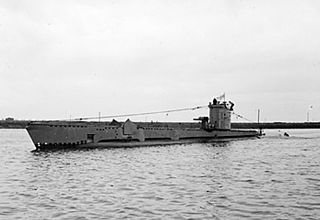
The German U-boat U-864 was attacked and sunk on 9 February 1945 by HMS Venturer, a V-class submarine of the Royal Navy. Venturer was patrolling the waters around Fedje Island, off the Norwegian coast in the North Sea. The sinking remains the only incident in the history of naval warfare where one submarine sank another while both were submerged.
German submarine U-58 was a Type IIC U-boat of Nazi Germany's Kriegsmarine that served in the Second World War. She was produced by Deutsche Werke AG, Kiel. Ordered on 17 June 1937, she was laid down on 29 September as yard number 257. She was launched on 12 October 1938 and commissioned on 4 February 1939 under the command of Oberleutnant zur See Herbert Kuppisch.
